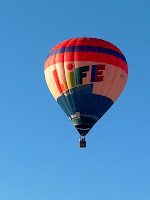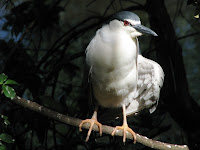
Just click on the photo above (to enlarge) - to read the back "blurp" (= a synopsis)
Sunday, February 20, 2011
A friendly Reminder
With a little Help
"With a little help from a friend" comes to mind when watching a Redbilled oxpecker "at work" - in this case checking an impala for ticks = this small bird's "dining-room table".
An oxpecker's principal food is ticks, which it pulls from the hides of wild game and domestic cattle with it's strong and heavy bill. Whilst "snacking", an oxpecker feeling "at home" on a wild animal can result in a comical-looking image.
However impalas are the only hoofed animals not only dependent on 



When we talk about grooming we usually think that it's a primate "occupation" (in contrast to impalas = SEE above). Watching Vervet monkeys grooming each other is probably one of the most endearing moments one can experience when in the wild - whilst from a primate "perspective", grooming or the removal of ticks is "high on the list" of survival skills.
Friday, February 11, 2011
Historic Date



So: I feel honoured that in a way, I'm now "sharing" this historic date with Madiba.
Thursday, February 10, 2011
Water related





The tiny ducklings "represented" a mixed bunch! = they appeared to be 2 different species.
Since Whitefaced & Fulvous ducks often share the same habitat . . .

. . . or this similarly beautiful & colourful Mandarin duck (from eastern Asia or migrant of southern China).
Monday, February 7, 2011
Beware Wild Animals

When many visitors ignore such warnings, they "suffer" as a result - if they are lucky, they don't get hurt in the process, but often, their food gets stolen.
Through the years & after actually being "fed" by visitors, which these days is totally prohibited, the Cape-Peninsula-baboons have "learnt a trick or 2" - if they smell food, they "attack", meaning they have learned to become thieves - other than "remaining" dangerous. This is rather tragic, because it means that these wild animals have become dependent on food they steal from humans, instead of surviving "naturally" in the wild.

Unfortunately the Cape Peninsula isn't the only area, where baboons have learned to steal - this thief "posed innocently" in the Tsitsikamma National Park after raiding the grocery stock of visitors, who hadn't closed the door of their chalet.
And what about this Vervet monkey appearing to "adopt" the role of a waiter? In actual fact it's examining the contents of a table setting for "available" food at the Skukuza Camp in the Kruger National Park.
Looking rather innocent - even cute - this monkey's behaviour is part of a "learning process", which doesn't bode well for natural survival in the wilderness.
And what about this monkey youngster watching "procedures" - is it busy "memorising" how to become a thief in the near future?
Saturday, February 5, 2011
Birds Bath
There's a place at the Lower Sabie Camp in the Kruger National Park, where I could stand for hours watching colourful birds - like these weavers - enjoying a bath during hot summer days.
What fun! A Black-eyed bulbul has joined the weavers . . .
. . . but then is replaced by a Glossy starling . . .
. . . which similarly enjoys cooling off.
It's non-stop action as the birds "rotate" . . .
. . . while some birds really look funny when "shaking off" water.
Not all birds use a bird-bath when "feeling in need" of cooling off - any water will do!
Even water birds - like this Whitefaced Duck - don't just "glide" across the water but appear to also have fun doing so.
Or this Greater flamingo having a real good "dip".




















